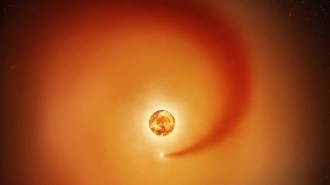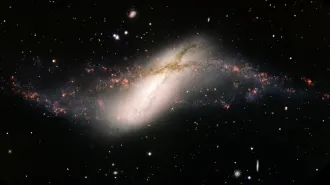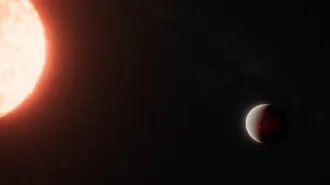Cosmic rays maintain their mystery
Excerpt from the November 27, 1965 issue of Science News Letter
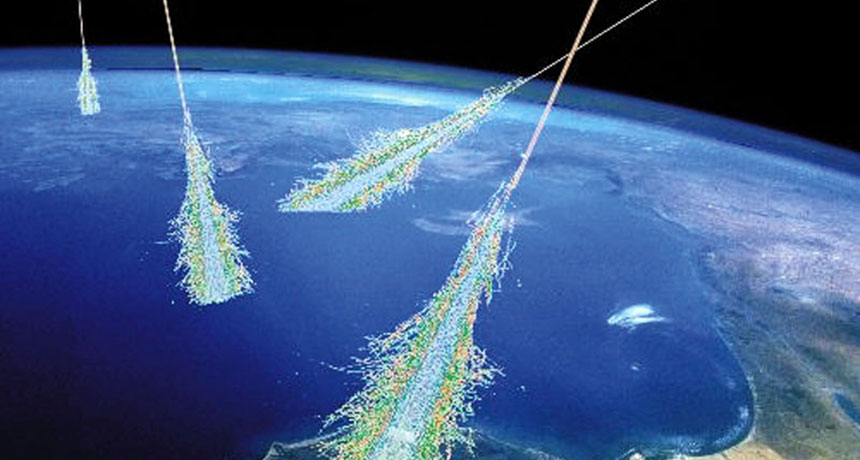
SUBATOMIC SHOWERS Earth is perpetually pelted by cosmic rays, which trigger cascading showers of subatomic particles (illustrated) when they hit the atmosphere.
NASA, S. Swordy/University of Chicago
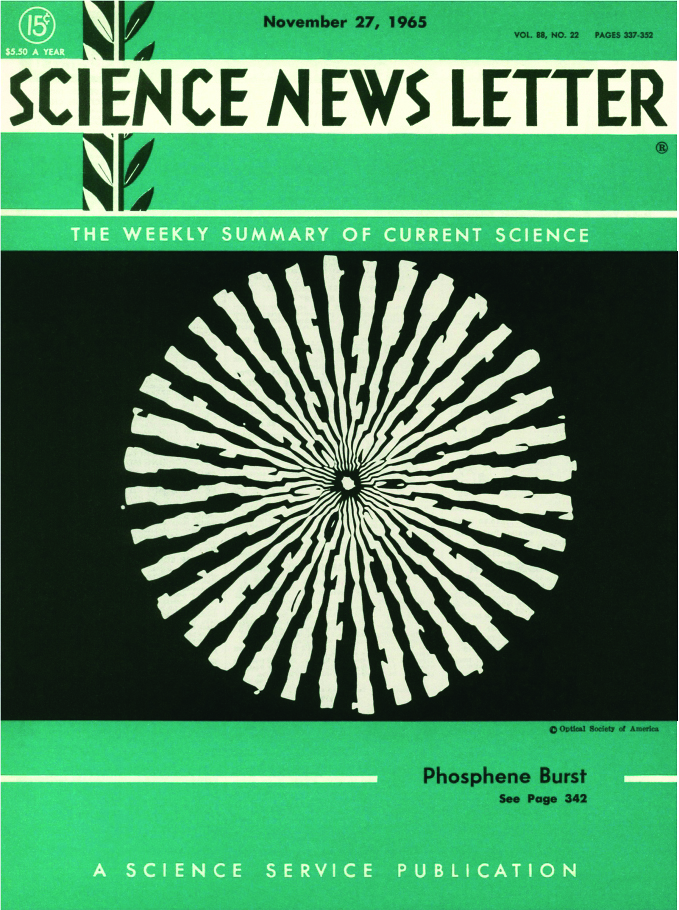 Major energy cosmic? — Previous ideas on how long and how far [cosmic rays] travel in interstellar space were probably incorrect. It now appears that either these nuclei are younger and have passed through less of the Milky Way galaxy than previously thought … or … cosmic radiation fills all of space, not just our galaxy. If this is so, then the physical processes of producing cosmic rays must be as common as those which produce star light. —
Major energy cosmic? — Previous ideas on how long and how far [cosmic rays] travel in interstellar space were probably incorrect. It now appears that either these nuclei are younger and have passed through less of the Milky Way galaxy than previously thought … or … cosmic radiation fills all of space, not just our galaxy. If this is so, then the physical processes of producing cosmic rays must be as common as those which produce star light. — 